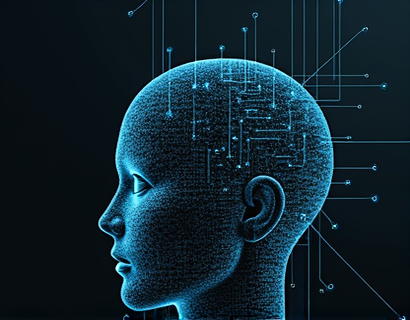AI-Driven Chat Interface: Revolutionizing Access to ICU Knowledge and Healthcare Decisions
The integration of artificial intelligence in healthcare, particularly within Intensive Care Units (ICUs), marks a significant advancement in patient care and operational efficiency. An AI-driven chat interface is emerging as a pivotal tool, offering real-time insights and enhancing communication among patients, caregivers, and healthcare professionals. This technology ensures that all stakeholders have access to comprehensive and timely information, thereby facilitating informed decision-making and improving outcomes in critical care settings.
Enhancing Patient and Caregiver Communication
The primary goal of an AI-driven chat interface in an ICU setting is to bridge the communication gap between patients, their caregivers, and the healthcare team. Traditionally, the complex nature of ICU services and the urgency of care can make it challenging for patients and their families to obtain clear and accurate information. The chat interface simplifies this process by providing instant answers to common questions, explanations of medical procedures, and updates on a patient's condition. This immediate access to information empowers patients and caregivers, reducing anxiety and fostering a more collaborative approach to care.
Real-Time Insights for Healthcare Professionals
For healthcare professionals, the AI chat interface serves as a valuable resource for quick access to critical data and expert insights. In the fast-paced environment of an ICU, where every minute counts, having a reliable source of information can be life-saving. The chat interface can provide up-to-date protocols, medication dosages, patient histories, and evidence-based guidelines at the point of care. This real-time access not only enhances the efficiency of healthcare delivery but also ensures that decisions are based on the most current and accurate information available.
Improving Decision-Making Processes
The integration of AI in ICU communication goes beyond mere information dissemination; it actively supports decision-making processes. By analyzing vast amounts of data, the chat interface can offer predictive insights and recommendations, helping healthcare providers anticipate potential issues and intervene proactively. This capability is particularly beneficial in managing complex cases where multiple factors need to be considered simultaneously. The AI's ability to process and synthesize information rapidly can lead to more accurate diagnoses, optimized treatment plans, and better patient outcomes.
Enhancing Operational Efficiency
Beyond direct patient care, the AI-driven chat interface contributes to the overall operational efficiency of the ICU. By automating routine inquiries and providing standardized responses, the system reduces the workload on healthcare staff, allowing them to focus on more critical tasks. This automation also minimizes the risk of human error in information transmission, ensuring that all team members have consistent and reliable data. Additionally, the chat interface can streamline administrative processes, such as scheduling, reporting, and documentation, further enhancing the productivity of the ICU team.
Personalized Patient Experiences
The AI chat interface personalizes the patient experience by tailoring interactions based on individual needs and preferences. Through natural language processing, the chat can understand and respond to user queries in a conversational manner, making the interaction more intuitive and user-friendly. For patients with limited medical knowledge, the chat can explain complex medical terms and procedures in simpler language, ensuring they fully understand their situation and the proposed treatments. This personalized approach not only improves patient satisfaction but also builds trust in the healthcare system.
Supporting Multilingual and Accessible Care
In diverse healthcare settings, language barriers can impede effective communication. The AI chat interface can be programmed to support multiple languages, making high-quality care accessible to a broader range of patients. For those with hearing or speech impairments, the chat can also integrate text-to-speech and speech-to-text features, ensuring that all patients can interact with the system seamlessly. This inclusivity is crucial in providing equitable care and meeting the needs of a diverse patient population.
Data Security and Privacy
While the benefits of an AI-driven chat interface are significant, ensuring the security and privacy of patient data remains paramount. The system must adhere to stringent data protection standards, such as HIPAA, to safeguard sensitive information. Advanced encryption methods and regular security audits are essential to maintain the integrity of the data handled by the chat interface. Patients and healthcare providers can have confidence in the system's ability to protect their information, fostering trust and encouraging its widespread adoption.
Training and Adoption
For the AI chat interface to be effective, proper training and support are necessary. Healthcare institutions should provide comprehensive training programs for staff to familiarize them with the system's capabilities and best practices for usage. This training should cover both the technical aspects of the chat interface and the clinical knowledge it provides. Continuous support and updates will ensure that the system remains relevant and effective as healthcare practices evolve.
Future Developments and Potential
The potential for AI-driven chat interfaces in healthcare is vast, with ongoing advancements promising even greater benefits. Future developments may include more sophisticated natural language processing, enabling deeper and more nuanced conversations. Integration with wearable devices and remote monitoring systems could allow the chat to provide real-time health assessments and alerts, extending the scope of ICU care beyond the hospital walls. As AI technology continues to advance, the chat interface will become an even more indispensable tool in the healthcare ecosystem.
Conclusion
The AI-driven chat interface represents a transformative step in the realm of healthcare technology, particularly within ICUs. By enhancing communication, providing real-time insights, and supporting informed decision-making, this tool has the potential to significantly improve patient outcomes and operational efficiency. As the technology continues to evolve, its role in shaping the future of healthcare will only become more prominent, offering a promising pathway to better patient care and more effective healthcare delivery.










































